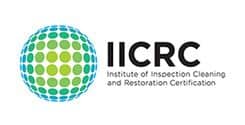Water damage can be a devastating and costly issue for homeowners and businesses alike. It can lead to structural damage, mold growth, and even health problems if not addressed promptly and effectively. Traditional methods of detecting water damage, such as visual inspection and moisture meters, can be time-consuming and may not always provide accurate results. This is where thermal imaging technology comes into play. In this article, we will discuss the benefits of using thermal imaging for water damage detection, and how it can save you time, money, and potential health hazards.
1. Early Detection of Water Damage
One of the primary benefits of using thermal imaging for water damage detection is its ability to identify issues before they become severe. Thermal imaging cameras can detect temperature differences within building materials, which can indicate the presence of moisture. This allows for early detection of water damage, even in areas that may not be visible to the naked eye. By identifying water damage early, you can take action to mitigate the issue before it leads to more significant problems, such as structural damage or mold growth.
2. Non-Invasive and Non-Destructive
Traditional methods of water damage detection often involve invasive techniques, such as drilling holes or removing sections of walls, floors, or ceilings to access hidden areas. This can be both time-consuming and costly, as it may require additional repairs to restore the affected area. Thermal imaging, on the other hand, is a non-invasive and non-destructive method of detecting water damage. By using infrared technology, thermal imaging cameras can detect temperature differences within building materials without causing any damage to the structure. This not only saves time and money but also minimizes the disruption to your home or business.
3. Accurate and Reliable Results
Thermal imaging technology has come a long way in recent years, and modern thermal imaging cameras are capable of providing highly accurate and reliable results. By detecting temperature differences within building materials, thermal imaging can accurately pinpoint the source of water damage, even in areas that may not be visible to the naked eye. This allows for a more targeted approach to water damage restoration, ensuring that all affected areas are properly addressed and mitigated.
4. Mold Prevention
Mold growth is a common consequence of water damage, and it can pose significant health risks if not properly addressed. Mold thrives in damp, humid environments, and it can begin to grow within 24-48 hours of water exposure. By using thermal imaging to detect water damage early, you can take action to dry out the affected area and prevent mold growth before it becomes a problem. This not only protects the structural integrity of your home or business but also safeguards the health of its occupants.
5. Cost-Effective Solution
While the initial investment in a thermal imaging camera may be higher than traditional moisture meters, the long-term benefits and cost savings make it a worthwhile investment. By detecting water damage early and accurately, thermal imaging can help prevent more extensive and costly repairs down the line. Additionally, the non-invasive nature of thermal imaging means that you won't have to spend money on repairing damage caused by invasive detection methods. In the long run, thermal imaging can save you both time and money when it comes to water damage detection and restoration.
6. Comprehensive Documentation
Thermal imaging cameras can also provide comprehensive documentation of water damage, which can be invaluable when dealing with insurance claims or legal disputes. By capturing detailed images of the affected areas, thermal imaging can provide clear evidence of the extent of the water damage and the steps taken to mitigate it. This can help streamline the claims process and ensure that you receive the compensation you deserve.
7. Versatility
In addition to detecting water damage, thermal imaging technology can also be used for a variety of other applications, such as energy audits, electrical inspections, and pest detection. This versatility makes thermal imaging a valuable tool for homeowners and businesses alike, providing a range of benefits beyond water damage detection.
Conclusion
Thermal imaging offers a range of benefits when it comes to water damage detection. Its ability to detect issues early, provide accurate and reliable results, and prevent mold growth makes it an invaluable tool for homeowners and businesses alike. By investing in thermal imaging technology, you can save time, money, and potential health hazards associated with water damage and its consequences.







